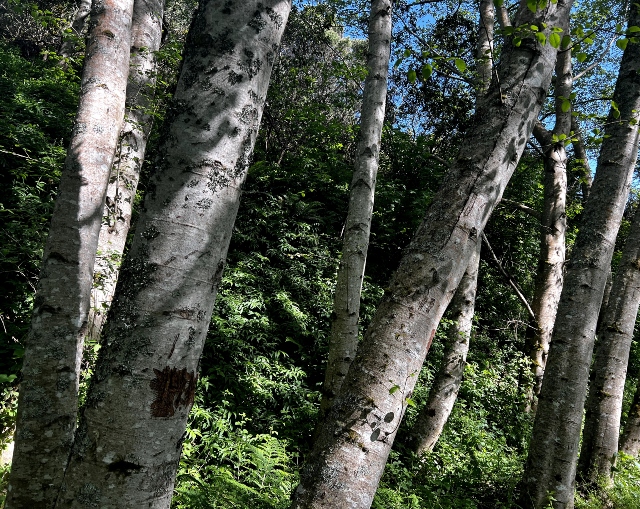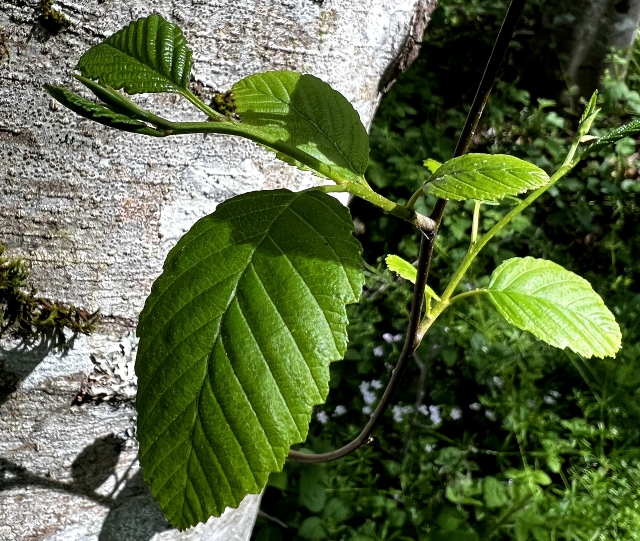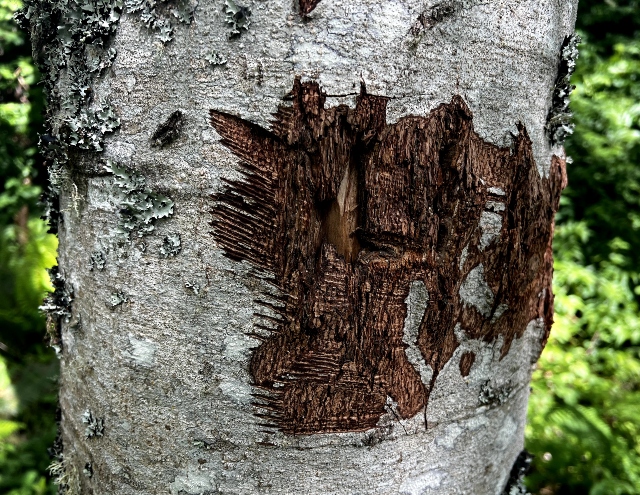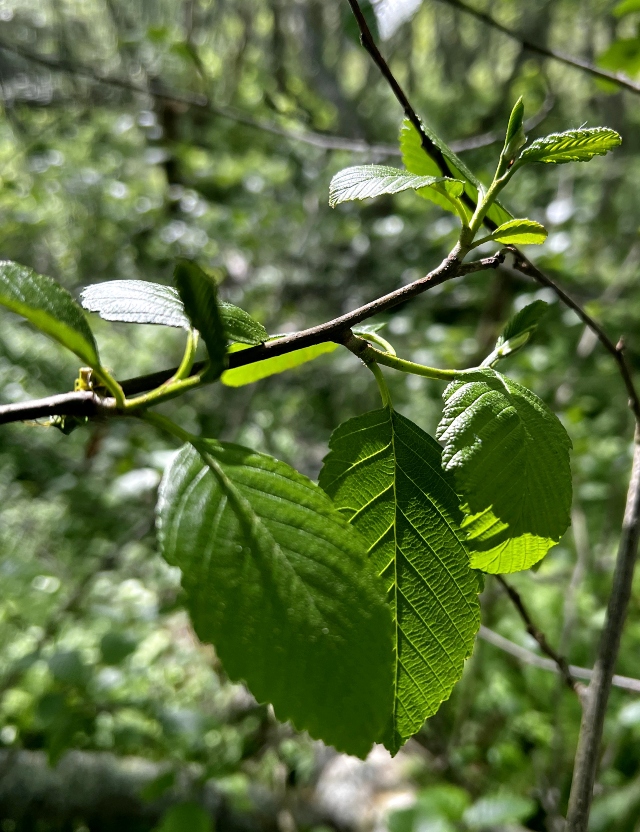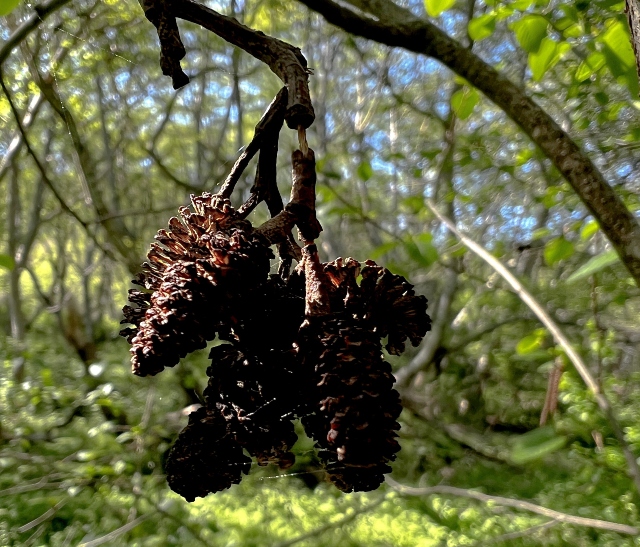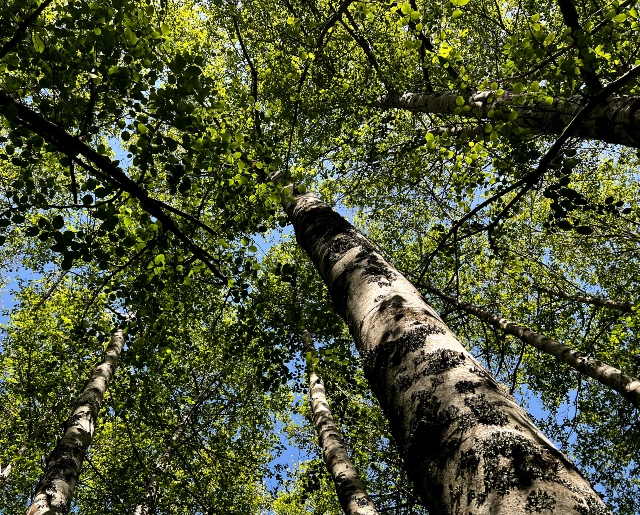While looking for snakes in California, I wandered into this stand of trees. Red Alder is the largest species of alder in North America and one of the largest in the world, reaching heights of 65 to 100 feet.
This tree is most often found in moist woods and along streambanks. It quickly colonizes recently cleared land. Although many consider Red Alder a “weed” tree because it will often invade landscapes, this species is the first choice for ecological restoration.
Red Alder is a host to nitrogen-fixing bacteria that form nodules on its roots. Because of this association, the introduction of Red Alder to disturbed sites can quickly improve the fertility of soils, making the site more amenable to the colonization by longer-living conifers. The bark of this tree is mottled, ashy-gray and smooth, often covered by white lichens and moss. Its common name derives from the bright rusty red color that develops in bruised or scraped bark.
Red Alder’s leaves are ovate, 3 to 6 inches long, with bluntly serrated edges and a distinct point at the end; the leaf edges tend to be slightly curled under, a diagnostic characteristic which distinguishes it from all other alders.
Long catkins appear in Spring, before the leaves, producing copious amounts of pollen. Later it produces small brown cone-like strobiles less than an inch long that remain on the tree through the Winter.
Because of its oily smoke, Red Alder is the wood of choice for smoking salmon.

